Grinding and honing spokeshave blades
For more information on spokeshaves, see our beginner site Common Woodworking.
We use spokeshaves a lot at the school. From the Foundational Course projects through to rocking chairs, these tools prove invaluable for shaping arches, rounding over and other multidimensional features we woodworkers configure in our work. Though these tools are very forgiving when it comes to sharpness; they are at their peak if they are sharpened well. I mentioned in an earlier blog that because of the short sole and the short iron itself, I often find spokeshaves do not work when the arrive from eBay or the students have sharpened them for a while. The reason is simple. Freehand sharpening is difficult because of the length of the cutting iron. It’s extremely hard on the fingertips where a lot of pressure is exerted to get the pressure you need to cut steel on abrasive stones and plates.
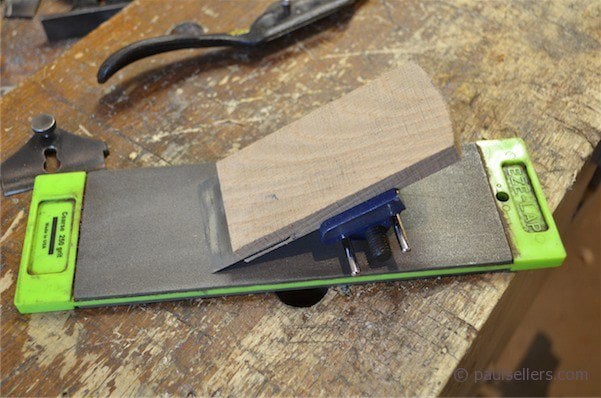
This device will fit into a honing guide and holds the spokeshave cutting iron well whilst being held well in the honing guide itself.
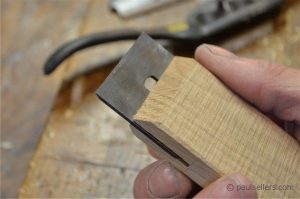
I rough cut on the bandsaw and leave the bandsaw marks in the surface for extra hand grip. Down the centre of the half inch thickness I make a bandsaw cut about 1 1/2” long. The kerf generally takes a cutting iron but you can run a second pass if needed to for thicker irons. This holder is 1/2” thick oak, the width of the actual cutting iron, two inches, and any length you feel good about, 4 1/2” in my case. The iron protrudes about 5/8” from the end of the holder, but that’s not a critical number and with twenty spokeshaves in each school there may be some variance in length after a while.
Though with a snug fit for the cutting iron in the holder there seems little need for further securement, I decided it safer to remove the screw from the spokeshave and tap it into the wooden holder. 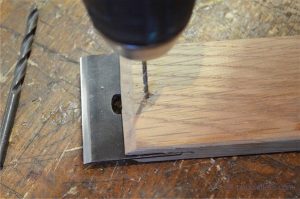
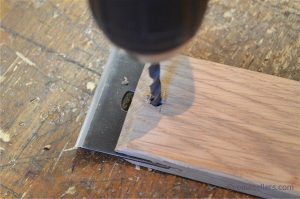
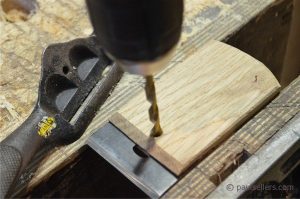
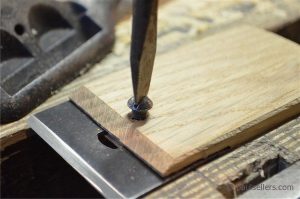
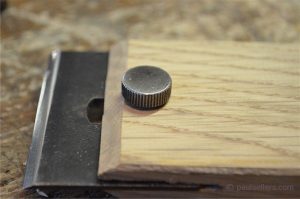
As you can see above top, the holder fits will in the honing guide and
you can apply as much pressure as you want when developing a ground bevel and also for fine honing.


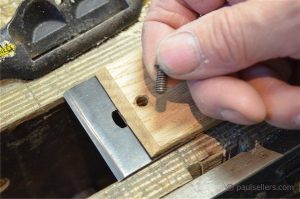
Hi Paul,
My experience with spokeshave blades is contradictory to yours. I actually taught myself to freehand sharpen on spokeshave blades and built up confidence with them because their short length makes them easier to balance on the bevel – there is less weight trying to make the blade fall flat. Even easier to free-hand sharpen are low-angle spokeshave blades, whose bevels are about half the length of the blade!
Chris
Paul,
I used your idea to make a similar jig out of a 16mm off-cut of sycamore, (no oak available).
Adapted it slightly (I was sharpening Veritas blades which are 3mm+ thick) I made a 3.5mm slot and ran a kerf further back to allow the jig to bind on the blade. Drilled a hole coincident with the one in the blade and used a self tapping screw to pull the two parts together and grip the blade.
It fits my honing guide after expending some elbow grease I have a ‘perfect’ 30˚ mitre.
Certainly would waste money buying a manufactured blade holder.
Have you ever tried clamping the iron in a vise and holding the stone? Those EZ-Lap stones are a reasonable size. Guess the fluid might be an issue, but thought I’d ask.